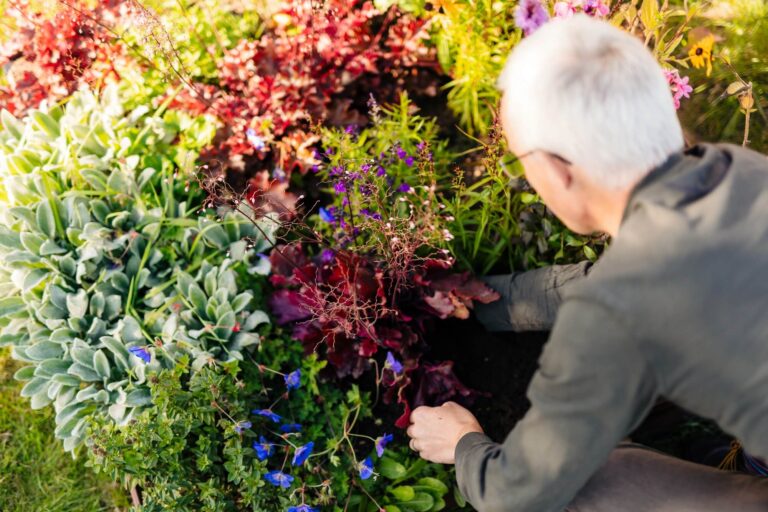Part one of our ‘Big Reset’ feature introduced some of the changes that nature makes in preparation for winter. In part two, we explore how birds and mammals respond to the onset of winter and what we can do to encourage these animals in our gardens and greenspaces.
Migratory birds depart for sunnier climes
As autumn progresses, many birds leave our shores for warmer conditions. As accomplished aerial hunters, swallows, and martins must head south as the abundance of flying insects declines with colder weather. This drop in food supplies also forces other insect feeders, like warblers, southwards and, although some like the Chiff Chaff (Phylloscopus collybita) might stay on in warmer parts of the UK, others like the Willow Warbler (Phylloscopus trochilus) will also migrate south to Africa. These migrations are very taxing on birds and we can help by ensuring there are plenty of insect food supplies throughout the summer so, the more diverse and wild your garden is, the more insects it will support.
A feast of fruit and seeds
Other birds choose to stay put and tough it out. Finches, like the Chaffinch and Greenfinch rely on seeds for their winter food but will also look out for berries or fruit. Bird feeders with sunflower hearts or peanuts are their favourite but encouraging an abundance of native shrubs in your garden will ensure there is a supply of natural food as well. Honeysuckle and wild roses make an excellent choice as they provide an abundance of bright berries and hips, well into the winter.
Resident birds take shelter together
Hold back from cutting these shrubs back so that you can benefit from the brightness of the fruit and feathers against the drab winter colours. Members of the tit family are adept climbers and will hang in the most precarious of positions searching for any insects still hiding amongst the dead stems and leaves. Again, leaving those dead stems uncut will provide places for invertebrates to hide and feed and so provide hunting areas for blue tits and coal tits.
True to their scientific name of Troglodites, Wrens like to hunt in the dark cave like areas amongst dense foliage so encouraging plants like ivy will provide valuable space for them. Leaving your bird boxes up during the winter is a good move as these species will roost within them, finding shelter during the cold winter nights. Wrens are well known for sharing these winter roosts, sometimes with surprising numbers of individuals. According to the British Trust for Ornithology a record number of 63 birds were found using one nestbox! Blue tits and coal tits will utilise the same boxes as winter roosts, sharing refuge and body heat.
When it comes to spring however, this mutualism ceases and blue tits will evict coal tits from boxes they have started to nest in to start a nest of their own. Coal tits are actually vulnerable to eviction by blue tits and great tits in standard boxes and much prefer to nest in holes less than a metre from the ground. This is why our NatureArk includes a nest hollow specifically for coal tits.
The arrival of fieldfares to feed
During autumn and winter, we are also graced by birds from other countries. Fieldfares with their bright yellow beaks and redwings with rich red underwings arrive from Northern Europe and Russia to rub shoulders with greatly boosted numbers of blackbirds. Berries are especially important for these species so lush hedges and borders can provide vital food supplies for these birds. If you do have a hedge or berry bearing shrub, remember that flowers and fruit are usually only borne on the second year’s growth so cutting them back every year will remove the benefits of food and colour.
Land based mammals find refuge in the undergrowth
Without wings, our terrestrial mammals have had to find different ways to survive the winter. Mice and voles rely on extensive burrow systems to provide some refuge from the weather and from predators. Extended above ground through long grass these runs will often contain a larder of collected seeds or cut leaves so that they can feed in relative safety.
Leaving areas of long grass and untamed borders will support these small mammals and, in turn, create additional hunting areas for owls and even stoats or weasels. With their high metabolism and frenetic lifestyle, shrews must eat every 2-3 hours and this means it’s a constant search for invertebrate prey. Feeding on a wide range of invertebrates including beetles, worms, slugs and small snails, shrews will frequent the wilder areas of gardens and habitat piles and compost heaps will provide a ready supply of food for them.
At BioScapes HQ we have found that mice, voles and even moles love to burrow and nest deep inside the NatureArk and the other habitat units. Here, they have great protection from weather and predators as well as immediate access to the invertebrates living in the ‘dead wood zone’. This burrowing activity has also benefited amphibians with toads and newts seeking refuge deep inside.
Preparing to hibernate
Although some of our mammals will conserve energy by entering a slower state of torpor it is only the bats, dormice and hedgehog who actually hibernate – greatly reducing their metabolism through the months of winter. Body fat, gained through the summer and autumn, is essential if these animals are to survive the winter as is a refuge with good protection from disturbance and a stable temperature.
Once again, a broad diversity of different plants and habitat areas in your garden will benefit hedgehogs, and the invertebrates they feed upon. The wilder these are, the more feeding opportunities there will be for hedgehogs and other wildlife.
Finding a suitable hibernaculum for the winter is very important and hedgehogs will often crawl under sheds or decking if they cannot find more natural sites. There are many hedgehog homes on the market and at BioScapes we include a hedgehog house in all of our habitat units. Made from strong and durable plywood these dry habitats fit snugly within the units and are then insulated by the dead wood material and soil to make a secure home for a sleepy hedgehog.
Author: Terry Smithson BSc in Zoology, MSc in Ecology
Terry is our in-house ecologist. He’s worked in the nature conservation sector for over 25 years and loves all things wildlife, especially hoverflies, beetles, mammals and birds. He’s helped design our BioScapes products so they maximise the recovery of wildlife and he’s happy to offer advice to individuals, schools and businesses on how to boost biodiversity.


